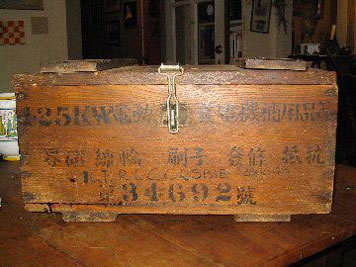a yellow-green sky
“This storm’s not a really bad Midwest storm, she remarks, as they stand by the scarecrow in the horizontal rain. Too windy to be really dangerous. The bad storms always hide behind a dead calm and a yellow-green sky. That’s when you head for the cellar.”
—David Foster Wallace, ‘Westward the Course of Empire Takes Its Way’, Girl With Curious Hair, 1989.
ROSES ARE GREEN, VIOLETS ARE YELLOW.
 A T-shirt from TypeTees, a subsidary of Threadless. I like the sentiment, and the colors are perfect. The font, Century Schoolbook, is a good choice. But . . . the letterspacing is too tight, AND SOMEBODY MUST HAVE HIT THE CAPS LOCK; THE MONOTONOUS OF CAPITALS IS ANNOYING AND EVEN, TO MY EYE, OBNOXIOUS. I would have preferred some lower-case letters. It’s poetry, right? I don’t understand why the variation in leading between colors was necessary, unless it was to give the screenprinters of error. And . . .
A T-shirt from TypeTees, a subsidary of Threadless. I like the sentiment, and the colors are perfect. The font, Century Schoolbook, is a good choice. But . . . the letterspacing is too tight, AND SOMEBODY MUST HAVE HIT THE CAPS LOCK; THE MONOTONOUS OF CAPITALS IS ANNOYING AND EVEN, TO MY EYE, OBNOXIOUS. I would have preferred some lower-case letters. It’s poetry, right? I don’t understand why the variation in leading between colors was necessary, unless it was to give the screenprinters of error. And . . .
a hatch mark, a foot sign, rather than an actual apostrophe? Typographically, this shirt is a trainwreck. But still, it’s funny. I’ll give it a B+.
six butterflies
“There are nine different words in Maya for the color blue in the comprehensive Porrua Spanish-Maya Dictionary but just three Spanish translations, leaving six butterflies that can be seen only by the Maya, proving beyond doubt that when a language dies six butterflies disappear from the consciousness of the earth.”
—Earl Shorris, ‘The last word: Can the world’s small languages be saved?’, Harper’s Magazine, August 2000.
there are more sensations than words for them
“Colors challenge language to encompass them. (It cannot; there are more sensations than words for them. Our eyes are far ahead of our tongues.)”
—Ellen Meloy, The Anthropology of Turquoise, 2002.
the Right Blue Claim
“In sun that burns white-hot I say aloud the names of Nevada mines for a coolness that a word might bring. The Blue Fern Mine. The Blue Goose Claim. The Blue Jay, Blue Matrix, Blue Friday, Blue Silver, Easter Blue MInes. Mines that come in shades—New, Royal, and Sky Blue—and in certainty: the Right Blue Claim.”
—Ellen Meloy, The Anthropology of Turquoise, 2002.
a sympathetic gem
“Turquoise changes color. Sometimes its color vanishes—one early source calls it ‘air green.’ The wearer can influence these changes. Turquoise is a sympathetic gem.”
—Ellen Meloy, The Anthropology of Turquoise, 2002.
green confusion
“It has been shown that the words for colors enter evolving languages in this order, nearly universally: black, white, and red, then yellow and green (in either order), with green covering blue until blue comes into itself. Once blue is acquired, it eclipses green. Once named, blue pushes green into a less definite version. Green confusion is manifest in turquoise, the is-it-blue-or-is-it-green color.”
—Ellen Meloy, The Anthropology of Turquoise, 2002.
In the funhouse mirror-room
“In the funhouse mirror-room you can’t see yourself go on forever, because no matter how you stand, your head gets in the way. Even if you had a glass periscope, the image of your eye would cover up the thing you really wanted to see.”
—John Barth, ‘Lost in the Funhouse’, Lost in the Funhouse, 1968.
an unexpected color
“Words begin as description. They are prismatic, vehicles of hidden, deeper shades of thought. You can hold them up at different angles until the light bursts through in an unexpected color.”
—Susan Brind Morrow, The Names of Things, 1998.
